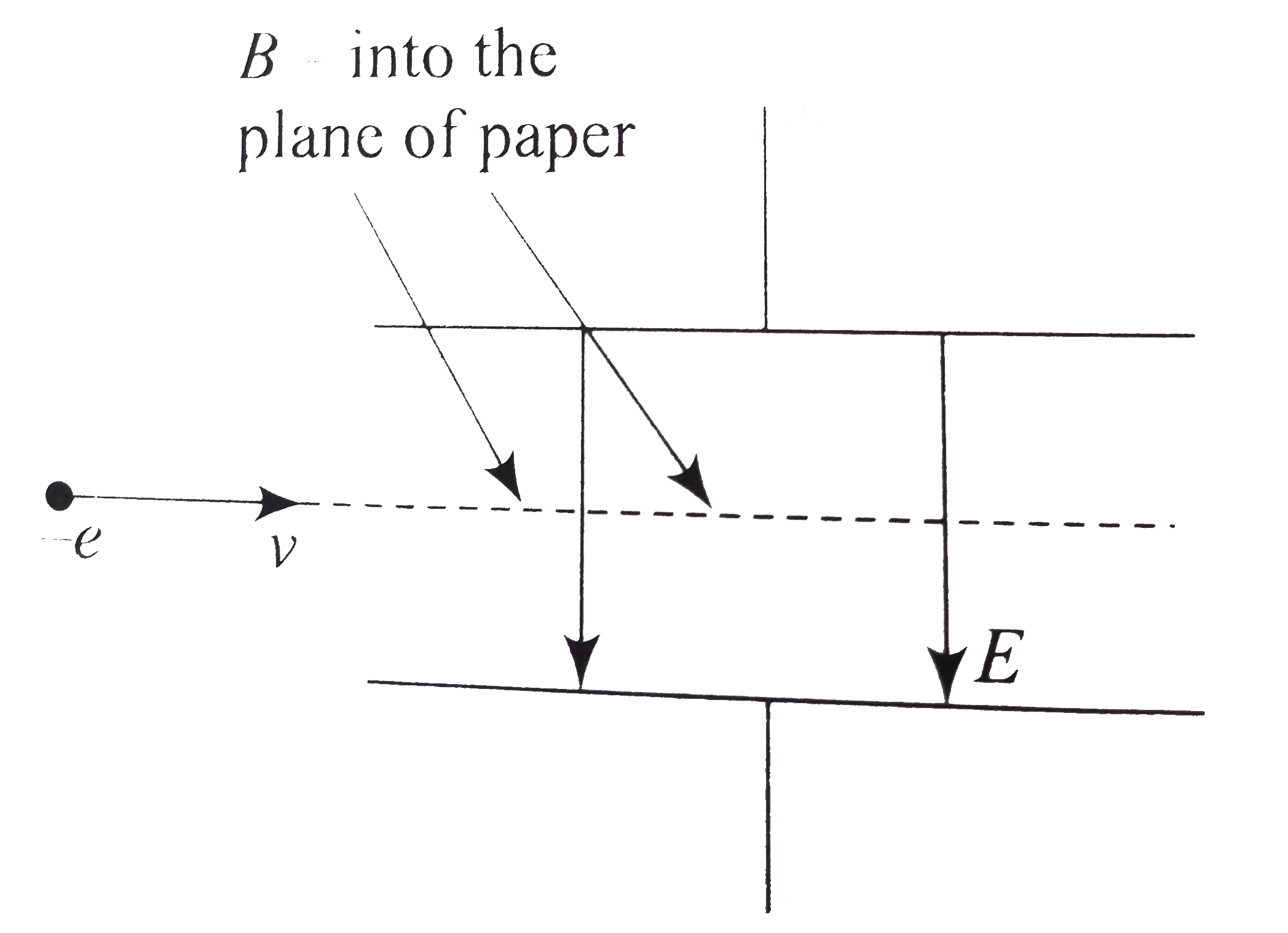Cathode rays of velocity 106ms−1 d escribe an approximate circular path of the radius 1m in an electric field 300 V cm−1. If the velocity of cathode rays are doubled. The value of electric field so that the rays describe the same circular path, will be
120 V cm−1
600 V cm−1
1200 V cm−1
12000 V cm−1
The correct Answer is:C
To solve the problem step by step, we will analyze the forces acting on the cathode rays in both scenarios.
Step 1: Understand the forces acting on the cathode rays
When cathode rays move in a circular path, the centripetal force required to keep them in that path is provided by the electric force acting on them. The centripetal force Fc is given by:
Fc=mv2R
where m is the mass of the cathode rays, v is their velocity, and R is the radius of the circular path.
Step 2: Relate the centripetal force to the electric force
The electric force Fe acting on the charged particles in the electric field E is given by:
Fe=qE
where q is the charge of the cathode rays.
Since the electric force provides the centripetal force, we can equate the two:
mv2R=qE
Step 3: Substitute the known values for the first scenario
From the problem, we know:
- Initial velocity v=106m/s
- Radius R=1m
- Electric field E=300V/cm=30000V/m (conversion from cm to m)
Substituting these values into the equation:
m(106)21=q(30000)
This simplifies to:
m⋅1012=30000q(Equation 1)
Step 4: Analyze the second scenario with doubled velocity
Now, the problem states that the velocity is doubled, so the new velocity v′=2v=2×106m/s.
The centripetal force equation for the new velocity becomes:
m(2v)2R=qE′
Substituting v′:
m(2×106)21=qE′
This simplifies to:
m⋅4⋅10121=qE′(Equation 2)
Step 5: Relate the two equations
From Equation 1, we have:
m⋅1012=30000q
From Equation 2:
m⋅4⋅1012=qE′
Now, we can express E′ in terms of E:
E′=4⋅(30000)=120000V/m
Converting back to V/cm:
E′=1200V/cm
Final Answer
The new electric field E′ that allows the cathode rays to describe the same circular path when their velocity is doubled is:
1200V/cm
When cathode rays move in a circular path, the centripetal force required to keep them in that path is provided by the electric force acting on them. The centripetal force Fc is given by:
Fc=mv2R
where m is the mass of the cathode rays, v is their velocity, and R is the radius of the circular path.
The electric force Fe acting on the charged particles in the electric field E is given by:
Fe=qE
where q is the charge of the cathode rays.
mv2R=qE
From the problem, we know:
- Initial velocity v=106m/s
- Radius R=1m
- Electric field E=300V/cm=30000V/m (conversion from cm to m)
m(106)21=q(30000)
This simplifies to:
m⋅1012=30000q(Equation 1)
Now, the problem states that the velocity is doubled, so the new velocity v′=2v=2×106m/s.
m(2v)2R=qE′
Substituting v′:
m(2×106)21=qE′
This simplifies to:
m⋅4⋅10121=qE′(Equation 2)
From Equation 1, we have:
m⋅1012=30000q
From Equation 2:
m⋅4⋅1012=qE′
Now, we can express E′ in terms of E:
E′=4⋅(30000)=120000V/m
Converting back to V/cm:
E′=1200V/cm
The new electric field E′ that allows the cathode rays to describe the same circular path when their velocity is doubled is:
1200V/cm
Similar Questions
A charge of 10−6C is describing a circular path of radius 1cm making 5 revolution per second. The magnetic induction field at the centre of the circle is
View SolutionA particle is moving on a circular path of radius 10m with uniform speed of 4ms−1.The magnitude of change in velocity of particle when it completes a semi circular path is
View Solution
Knowledge Check
A charged particle is moving on circular path with velocityv in a uniform magnetic field B, if the velocity of the charged particle is doubled and strength of magnetic field is halved, then radius becomes
A8 timesB4 timesC2 timesD16 timesA circular plane sheet of radius 10 cm is placed in a uniform electric field of 5×105NC−1, making an angle of 60∘ with the field. Calculate electric flux through the sheet.
A1.36×102Nm2C−1B1.36×104Nm2C−1C0.515×102Nm2C−1D0.515×104Nm2C−1A particle is moving on a circular path of 10 m radius. At any instant of time, its speed is 5ms−1 and the speed is increasing at a rate of 2ms−2. At this instant, the magnitude of the net acceleration will be
A5ms−2B2ms−2C3.2ms−2D4.3ms−2
A proton carrying 1MeV kinetic energy is moving in a circular path of radius R in uniform magnetic field. What should be the energy of an α− particle to describe a circle of the same radius in the same field?
View SolutionA proton carrying 1MeV kinetic energy is moving in a circular path of radius R in unifrom magentic field. What should be the energy of an α− particle to describe a circle of the same radius in the same field?
View Solution
Electrons taveling at a velocity of 2.4×106ms−1 enter a region of crossed electric and magnetic fields as shoen in Fig. If the electric field is 3.0×106 Vm and the flux density of the magnetic field is 1.5 T, the electrons upon entering the region of the crossed fields will
View SolutionA charge q of mass m is moving with a velocity of V, at right angles to a uniform magnetic field B. Deduce the expression for the radius of the circular path it describes.
View SolutionIf 2 kg mass is rotating on a circular path of radius 0.8 m with angular velocity of 44 rad/sec. If radius of the parth becomes 1 m, then what will be the value of angular velocity?
View Solution
